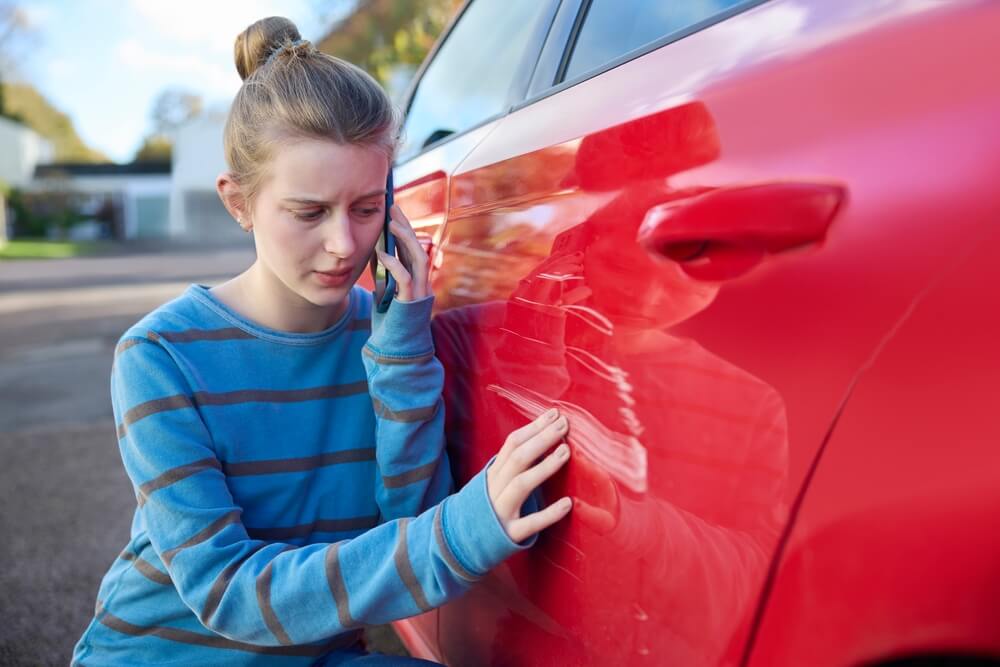
If you are not redirected within 30 seconds, please click here to continue.
Samedi: 10h – 16h HAE

If you are not redirected within 30 seconds, please click here to continue.
If you are not redirected within 30 seconds, please click here to continue.
Do you need to add your children to your auto insurance?

This article has been updated from a previous version.
It can be a rite of passage for many parents to add their child to their auto insurance policy, but it can raise plenty of questions. When is it necessary? How much will it cost? Are there ways to save on premiums?
Whether your child is a first-time driver or just occasionally borrows the family car, understanding the rules can help you make informed decisions that protect your family and your wallet.
Here’s everything you need to know about adding your children to your car insurance policy, including when it’s required, possible discounts, and when you can skip it altogether.
When should you add a child to your car insurance policy?
The timing for adding a child to your car insurance policy depends on their licensing status and driving habits.
- New drivers with a learner’s permit: If your child is still in the learner’s phase of your province’s graduated licensing program, you likely don’t need to add them to your policy just yet. Most insurance companies automatically cover learners when they’re driving under an adult’s supervision.
- Licensed drivers driving independently: Once your child advances in the licensing program and can drive without supervision, you’ll need to add them to your policy as an occasional driver. This makes sure they are properly covered if they drive on their own, even if it’s just once in a while.
- Adult children living at home: If your adult child continues to live at home and uses your car occasionally, they also need to be listed on your policy as a secondary or occasional driver.
- Exclusion forms: Some parents opt to exclude a child or household member from their policy using an exclusion form. This legal document states that the excluded individual will not drive your insured vehicle under any circumstances. Be cautious with this option, as your insurance could be voided if an excluded driver borrows the car and gets into an accident.
Read more: Primary vs. secondary driver: How does it influence your rate?
Don’t forget about other household members
If you live with other licensed drivers, such as relatives or roommates, they may also need to be added to your policy, especially if they drive your car. Insurance companies evaluate the risk of everyone in a household, so it’s always best to disclose all potential drivers to your insurer to avoid coverage issues down the line.
Are there any discounts available for young drivers?
Adding a young or newly licensed driver to your auto insurance policy is often expensive, but there are ways to lower the cost. Here are some discounts you might qualify for when insuring your children as secondary drivers:
- Driver’s education discounts:
Many insurers offer a discount if your child completes a certified driver’s education course, and you provide proof of completion. This can reduce premiums by up to 10%. - Good student discounts:
Some insurers reward students who maintain high grades, viewing academic performance as a sign of responsibility. - Safe driving and telematics programs:
Enrolling in programs that monitor driving habits through an app or device plugged into the car could help you earn discounts for safe driving.
Additionally, if your child doesn’t own their own car, adding them as an occasional driver to your existing policy is often cheaper than getting them their own coverage. However, if they do have their own vehicle, they’ll need a separate insurance policy in their name.
Learn more: 15 ways to get cheaper car insurance
When don’t you need to add your child?
There are certain situations when your child doesn’t need to be listed on your car insurance policy:
- When they’ve moved out:
Once your child moves out and no longer lives in your home, they no longer need to be included in your insurance policy. If they still borrow your car occasionally, confirm with your insurer whether they would still be covered. - When they have their own car and insurance:
If your child owns their own vehicle and has their own insurance policy, there’s no need to include them on your policy unless they regularly drive your car.
Read more: First time getting car insurance? Don’t worry, it’s simpler than it looks!
What about other changes in household drivers?
It’s not just children that can affect your insurance policy. For instance, if your aging parents move in with you but still have their own car and insurance, you should inform your provider. While this typically doesn’t increase your premiums, transparency with your insurer ensures that all drivers in the household are taken into account.
By understanding when it’s necessary to add your children to your auto insurance, exploring available discounts, and keeping your insurer informed about changes in your household, you can make smart choices that save money while keeping everyone protected.
Want to save on your policy? Compare quotes from different insurers to find the best deal for you and your family.
Read next: How to add non-family members to your auto insurance policy
Don't waste time calling around for auto insurance
Use RATESDOTCA to shop around, and compare multiple quotes at the same time.
Get money-saving tips in your inbox.
Stay on top of personal finance tips from our money experts!









